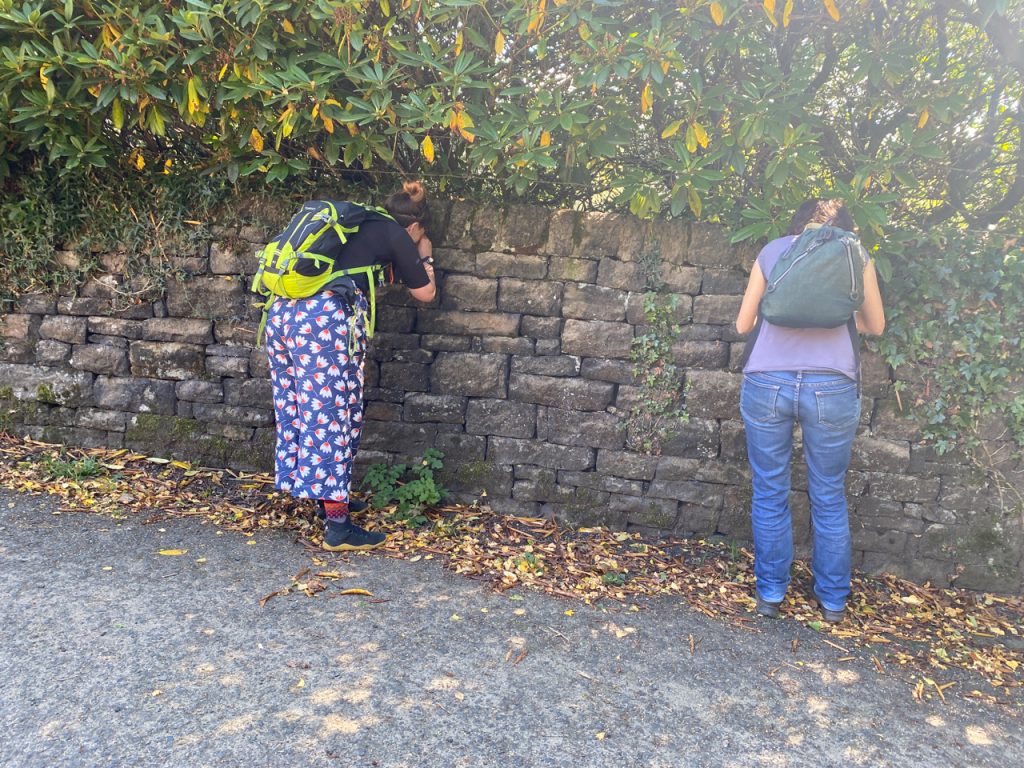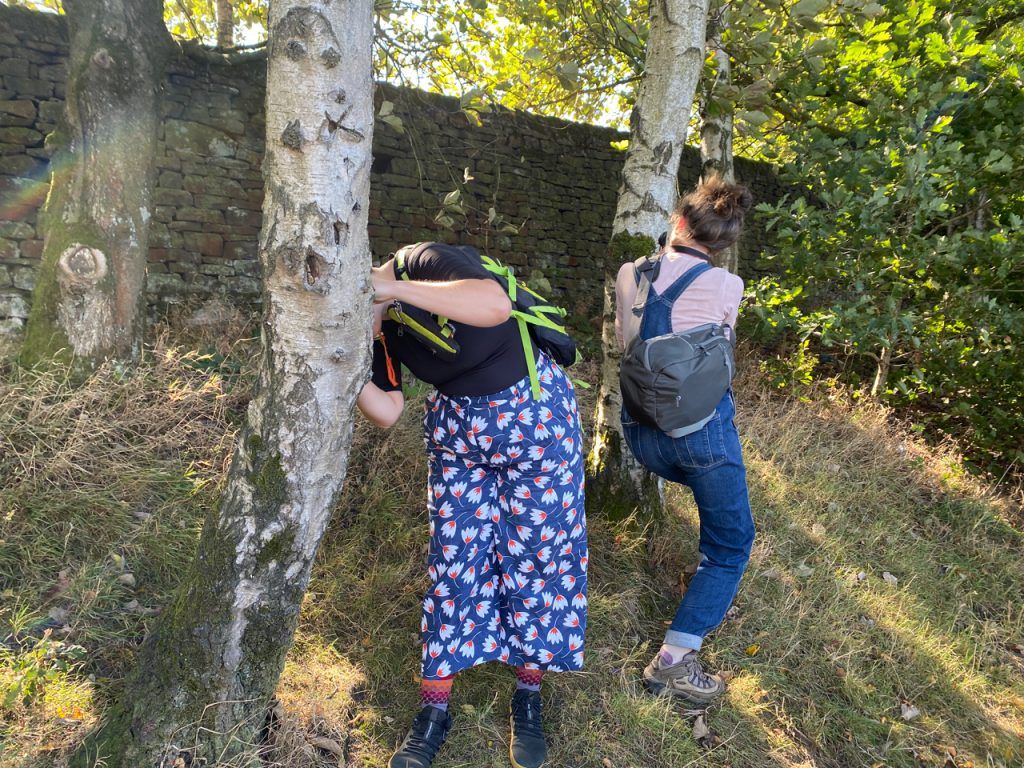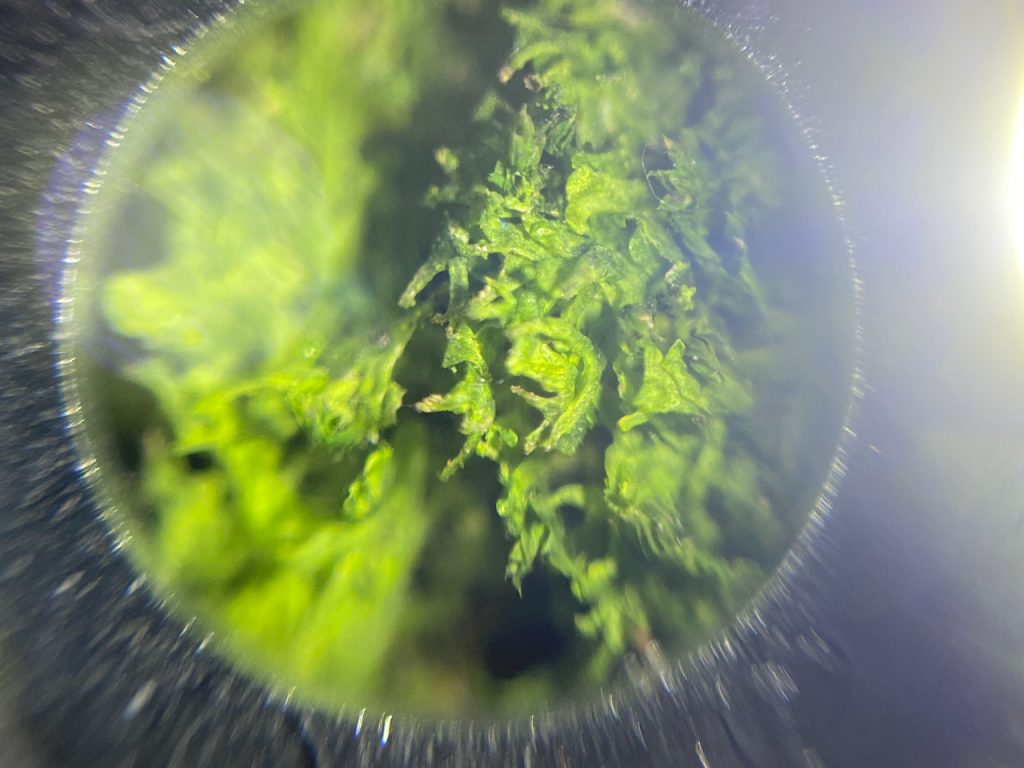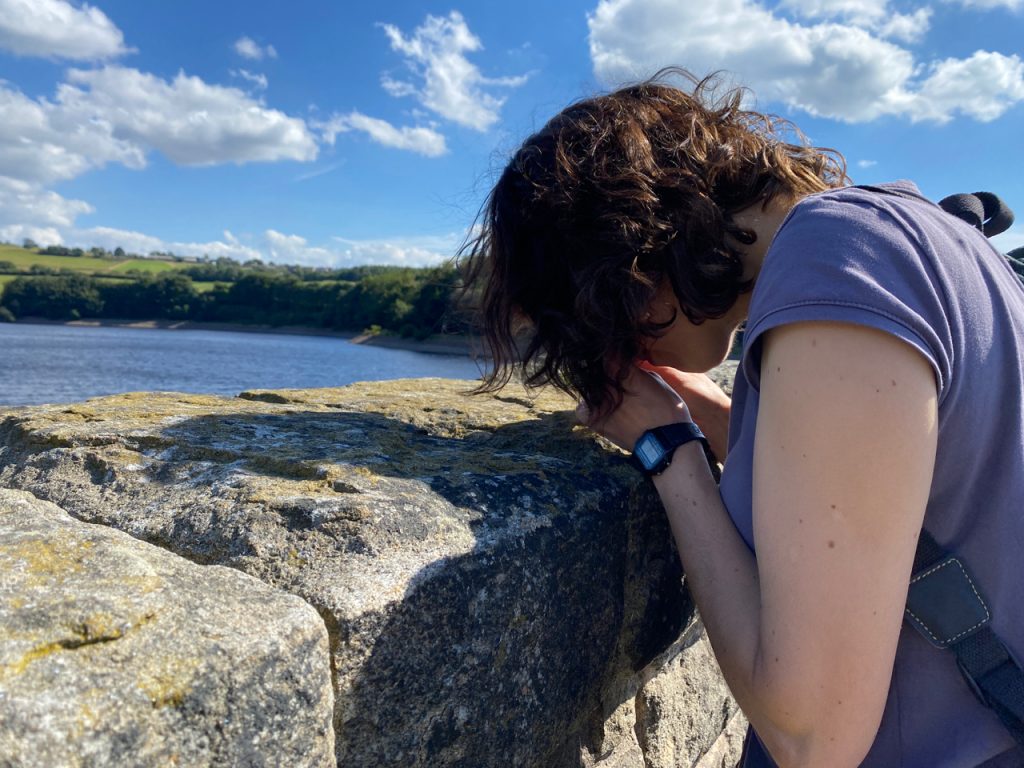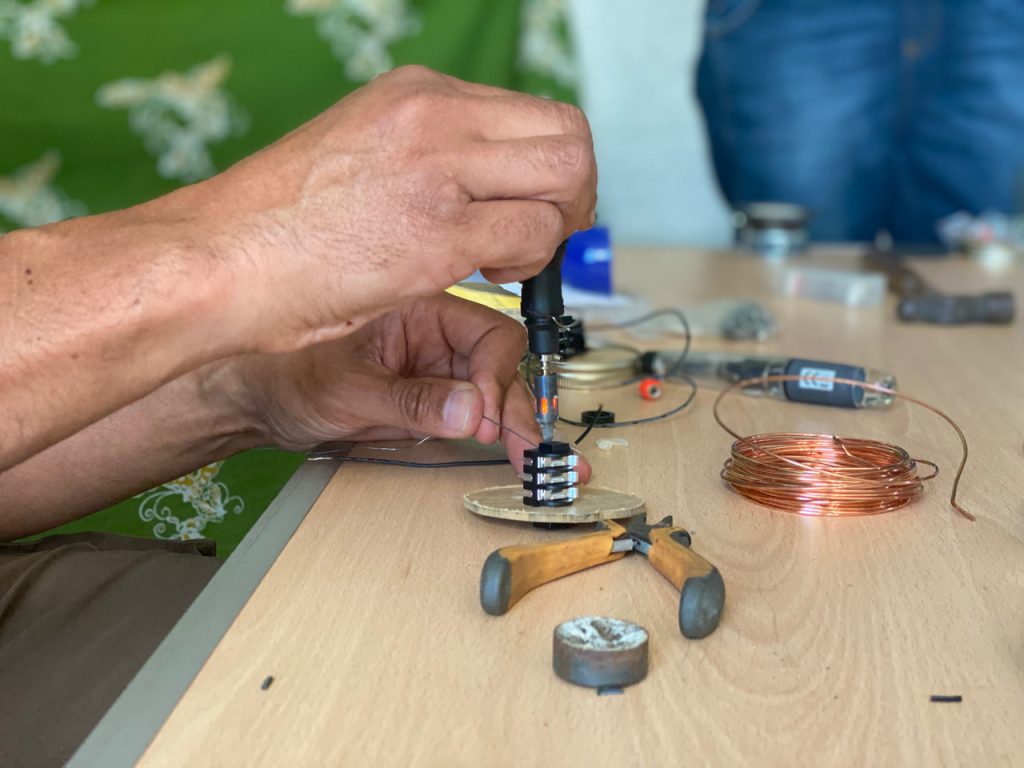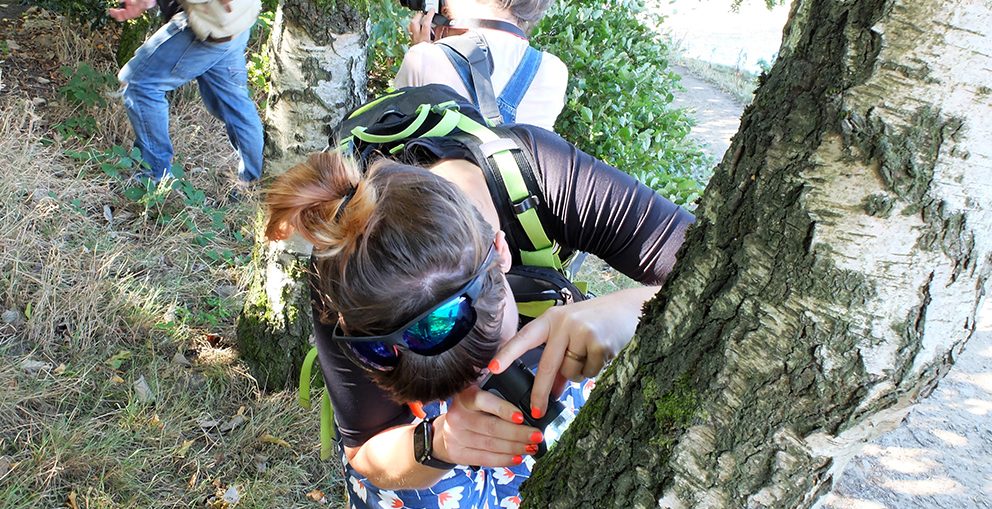
1/09/2022 Workshop / Longdendale Environmental Centre / GUIDEline project with Glassball Studios:
We met at Longdendale environmental centre for a day of walking and micro exploration, following a segment of the peak district boundary. The idea was to walk slowly, looking closely while collecting samples (microscopic creatures, plants, minerals, sounds), and explore how these things interact within the hypothetical space of the boundary space.

We discussed ‘boundary layers’ the spaces or microenvironments existing on surfaces or between objects and the free-flowing stream of air (gasses, humidity) and light. Mosses exist at specific boundary layers, miniature forests which act like environmental bubbles, trapping moisture, and creating shelter. Moss and other small plants Algae, and Lichen form biocrusts, which can make the most extreme of environments habitable for invertebrates and microorganisms. We thought about how our perceptions might shift when we start looking at the world at the microscale. We convened at an old quarry beside the reservoir, a sheltered area with rocky outcrops overshadowed by trees., where I read this passage from ‘Gathering Moss’ by Robin Wall Kimmerer…
“I think I must have crawled through a passage leading from beneath this pile of rock and out the other side. I wriggle from the tunnel and find myself not in the woods at all. Instead, I emerge into a tiny, grass-filled meadow, a circle enclosed by the walls of the stone. It is a room, a light-filled room like a round eye looking into the blueness of the sky. Indian paintbrush is in bloom and hay-scented fern borders the ring of the standing stones. I am inside the circle. There are no openings save the way that I have come and I sense that entrance closing behind me. I look all around the ring but I can no longer see the opening in the rock. At first I’m afraid, but the grass smells warm in the sunshine and the walls drip with mosses. How odd to hear the redstarts calling in the trees outside, in a parallel universe that dissipates like a mirage as the mossy walls enclose me.
Within the circle of the stones, I find myself unaccountably beyond thinking, beyond feeling. The rocks are full of intention, a deep presence attracting life. This is a place of power, vibrating with energy exchanged at a very long wavelength. Held in the gaze of the rocks, my presence is acknowledged.
The rocks are beyond slow, beyond strong, and yet yielding to a soft green breath as powerful as a glacier, the mosses wearing away their surfaces, grain by grain bringing them back slowly to sand. There is an ancient conversation going on between mosses and rocks, poetry to be sure. About light and shadow and the drift of continents. This is what has been called the ‘dialectic of moss on stone — an interface of immensity and minuteness, of past and present, softness and hardness, stillness and vibrancy, yin and yang.’ The material and the spiritual live here together.
The passage above is from Gathering Moss by Robin Wall Kimmerer (Oregon State University Press, 2013). The quote within Kimmerer’s text is from Moss Gardening by George Schenk (Timber Press, 1997).
Above: Images By Cora Glasser / Glassball Studios.
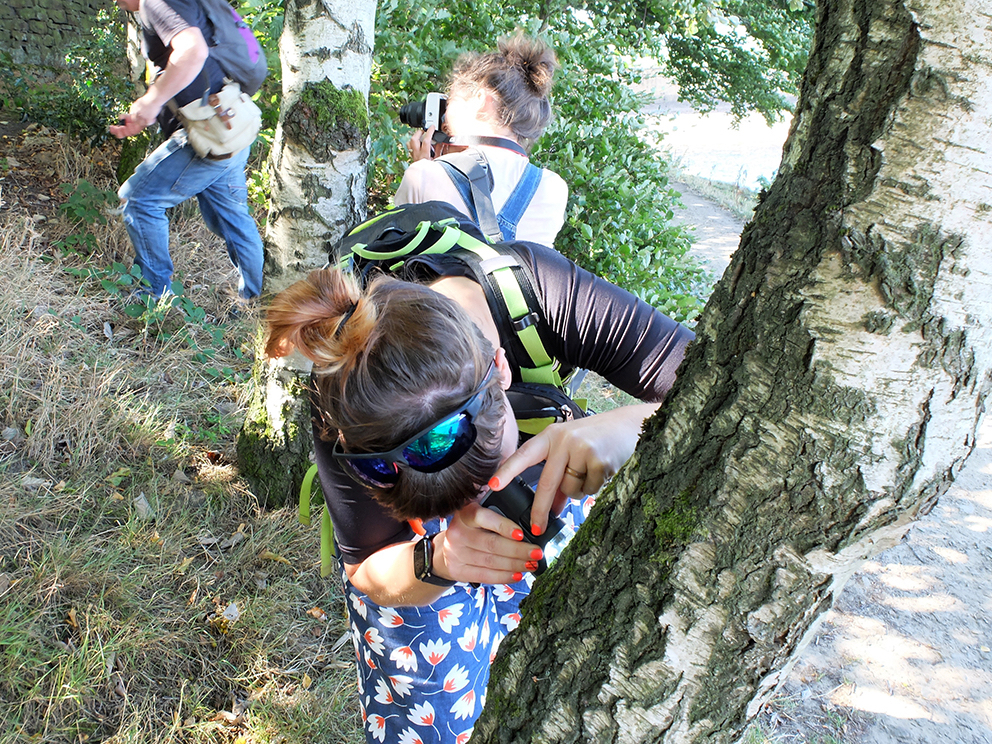
We returned to Longdendale Environmental Centre with our moss and soil samples, where we created miniature terrariums and ‘boundary detectors’. The boundary detectors are terrariums with built-in electronics that extract energy from the soil and moss. These Bio-Photo-Voltaic devices exploit the photosynthesis of the moss and the microbes in the soil to generate electricity [similar to an earth, or microbial batery]. The electricity powered a simple circuit which will allow us to hear the sound of light. in the next workshop, we will explore ways to use this to interact with invisible signals and sound. https://antonyhall.net/blog/mosscillators/
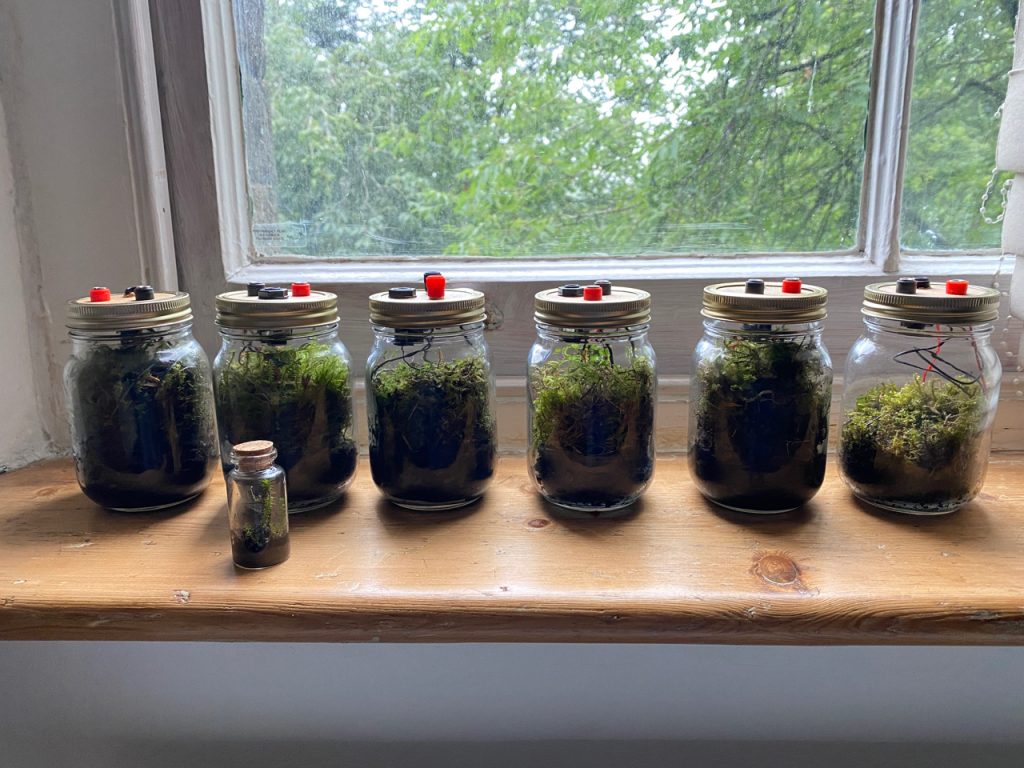
The weight of responsibility…now custodians of living moss batteries from our colab with @TabletopE & workshop participants yesterday (see our insta acc for more pictures). Will use these to detect the @peakdistrict #boundary during our upcoming #symposium (dates tbc) #GUIDEline pic.twitter.com/2UD1AXT4t4
— Glassball Studio (@GlassballStudio) September 2, 2022

The GUIDEline Project is supported by Arts Council England See more about the project and Glassball Studios here…
See the second part of the workshop here:
